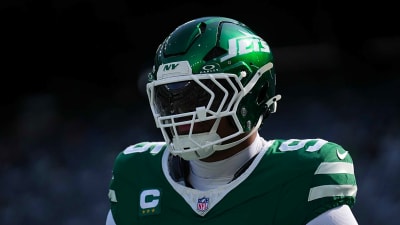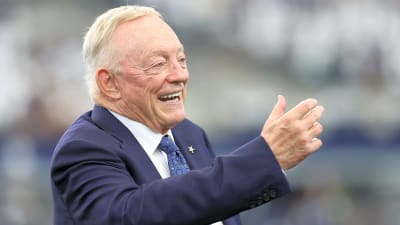
One of baseball’s most consistent starting pitchers in the 2020s, former Toronto Blue Jays right-hander Chris Bassitt has hit free agency ahead of his age-37 season.
It feels taboo to refer to the veteran as a late bloomer, even though he somewhat was. After breaking into MLB with the Chicago White Sox in 2014, Bassitt was traded to the Oakland Athletics, along with fellow future All-Star Marcus Semien and others, for right-handed pitchers Jeff Samardzija and Michael Ynoa.
His inaugural season in Oakland was strong. Across 86 innings, he posted a 3.56 ERA. Despite only ranking 152nd in innings, he ranked 109th in FanGraphs Wins Above Replacement among all pitchers. He even finished the year with an ERA roughly one and a half runs better than Samardzija’s.
His 2016 season was cut to just 28 innings due to injury, and then, in 2017, he dealt with shaking the rust off in the minor leagues. Finally, after 772 days between big-league starts, Bassitt returned with seven innings of one-run ball against the Kansas City Royals in June 2018.
Since that night, he’s tied for eighth in baseball in starts (195) and top 30 in ERA among pitchers with 500-plus innings.
Fast forward to 2025, Bassitt wrapped up a three-year contract with the Blue Jays with a trip to the World Series. In his age-36 season, he posted a 3.96 ERA and 4.01 FIP across 32 appearances and 170.1 innings.
Free Agent Profile: Chris Bassitt
- Age in 2026: 37
- 2025 Stats: 32 G (31 GS), 3.96 ERA, 4.01 FIP, 170.1 IP, 2.4 fWAR
- 2025 Salary: $22 million
- Qualifying Offer Eligibility: No
Contract Projection
- Contract Length Expectation: 1-2 years
- Expected AAV: $12-18 million
Bassitt had his fingerprints on this World Series run as well, despite relegation to the bullpen. While he did allow a crucial run in Game 7, he finished the postseason with a 1.04 ERA and a 1.52 FIP in 8.2 innings pitched.
Whether his postseason performance significantly affects his market remains to be seen. As he enters the twilight of his career, what might that market look like?
Free Agent Landing Spots for Chris Bassitt
Baltimore Orioles
A year removed from consecutive postseason berths, the Orioles churned out a last-place finish despite having one of the game’s best young cores.
This, in large, was due to a rotation that finished 24th in baseball in ERA and fWAR. However, the framework for a great rotation post-Corbin Burnes is still there. After all, lefty Trevor Rogers dominated to a 1.81 ERA in 18 starts, and right-hander Kyle Bradish looked impressive in his return from Tommy John recovery.
With Grayson Rodriguez figuring back into the mix, that gives the Orioles three promising young arms at the top of the rotation. The issue then becomes filling out the final couple of spots. Tomoyuki Sugano (now a free agent) was unimpressive in 30 starts, Dean Kremer was only okay in 29, and Cade Povich hasn’t broken out yet.
Raising the floor of the back end of the rotation with a pitcher as dependable as Bassitt could go a long way in improving Baltimore’s playoff odds. Not to mention, there’s precedent for the Orioles targeting arms with mileage, as they added Sugano along with Charlie Morton last winter.
Baltimore is one of the more underrated baseball markets in the league. When they’re good, that crowd shows out in droves. The lineup should see some positive regression in 2026, but the rotation needs a kickstart.
Texas Rangers
At the top, the Rangers have a very good rotation with Nathan Eovaldi and Jacob deGrom. Behind those two, however, they are very young.
Right now, FanGraphs projects Jack Leiter, Kumar Rocker and Jacob Latz to be the Rangers’ final three starters. Combined, that trio has 61 starts and 403.2 innings in MLB.
Nothing wrong with investing in the future, but with a veteran roster, it’s hard to imagine Texas lets Merrill Kelly, Tyler Mahle, and Patrick Corbin all walk without replacing any of them with an established veteran. The Rangers flirted with postseason contention throughout 2025, so retooling isn’t necessarily a priority for 2026.
Bassitt makes sense for several reasons. For starters, he’s projected to sign a deal on the cheaper side. For a team like the Rangers, with a few big contracts, getting value without breaking the bank is massive.
Moreover, the right-hander spent six years in the American League West early in his career. While plenty of turnover has happened since then, he’s familiar with some of the ballparks and crowd environments.
Milwaukee Brewers
Perhaps this is reading too much into trends, but Bassitt feels like such a Brewers target.
With rumors they could field offers on their No. 1, Freddy Peralta, there’s discussion for potential targets to replace him in the rotation. What’s more, left-hander Jose Quintana and right-hander Brandon Woodruff, 36 and 33, respectively, have already elected free agency.
Right now, Milwaukee’s projected rotation looks as follows:
- Freddy Peralta, RHP
- Jacob Misiorowski, RHP
- Quinn Priester, RHP
- Chad Patrick, RHP
- Logan Henderson, RHP
- Depth: Tobias Myers, RHP
While not having any lefty starters is unorthodox, being a postseason-caliber team with no true veterans in the rotation is even more so. Bassitt fits the mold of the free agent arm the Brewers like: crafty, with several pitch speeds and shapes to confuse opposition. Nothing super sexy, but he knows how to get hitters out.
Bassitt also always posts and provides quality innings each time he goes out there. In fact, 21 of his 31 starts lasted at least one out into the sixth inning, good for a 67.7% rate.
Here’s how the top five Brewers, by games started, did in comparison:
- Peralta: 15-for-33 (45.5 percent)
- Quintana: 15-for-24 (62.5 percent) *
- Priester: 13-for-24 (54.2 percent) **
- Patrick: 8-for-23 (34.8 percent)
- Misiorowski: 3-for-14 (21.4 percent)
*Free Agent
**Did it twice as well in relief (not accounted for)
This doesn’t necessarily suggest Bassitt is better than any of those starters, but providing length is inherently valuable. Recouping a veteran starter should be a high priority.
Athletics

This reunion would be fun, but it also makes sense for both parties.
While the team’s home ballpark in Sacramento played heavily in favor of the offense, it’s worth noting the Athletics had a top-10 offense in baseball. They ranked 10th in team wRC+ (105) and seventh in home runs.
Of their six players to reach 400 plate appearances, five had a wRC+ of at least 121. The lone one who did not, outfielder Lawrence Butler, still managed 21 homers and 64 runs batted in.
That said, their rotation struggled in 2025. Only three pitchers logged at least 100 innings for the A’s, and one of them got traded at the deadline (JP Sears). The duo of Jeffrey Springs and Luis Severino gave them decent value — 4.0 combined fWAR — but they combined for a 5.41 ERA at home.
It feels weird to call Bassitt a lifeline, but he may be able to buck the trend of struggling arms at Sutter Health Park. For starters, he generates groundballs at an above-average rate. In 2025, he ranked in the 70th percentile with a 46.1% groundball rate.
He also limits hard contact, with his average exit velocity against landing him in the 85th percentile.
As Bassitt approaches the end of his career, finishing it where it all truly began for him would be a fun story. Even more fun would be him being a contributor to an Athletics team that potentially vies for a Wild Card spot in 2026.
Cincinnati Reds
Last but not least is the Reds, who took advantage of a New York Mets tailspin to make the postseason for the first time since 2020.
This team is in a peculiar spot. They don’t really need another starting pitcher — until they do. There are reports suggesting they could opt to trade a starter for a bat, namely right-hander Hunter Greene.
Additionally, deadline acquisition Zack Littell and swingman Nick Martinez are free agents, further creating space for the Reds to add a starter.
Even in the seemingly unlikely scenario that they trade Greene, the Reds have a lot of talent at the top of their rotation. Excluding him, they have southpaws Nick Lodolo and Andrew Abbott and right-handers Chase Burns, Rhett Lowder, and Brady Singer.
What they could still use is a stabilizing force at the back end of the rotation; Bassitt, an Ohio native, makes a lot of sense to fill this hole.
Even though Cincinnati’s postseason run was short, this team has momentum going into the winter. In a weak National League Central, they’re only a couple of moves away from posing a threat to take that crown.
Seeing as they have one of the lowest tax payrolls in the league for 2026, they can afford to overpay for Bassitt as well. Giving him closer to the $18 million end of his salary projection would put them in a great position to land him. The only “downside” is that he’d be the highest-paid player on the roster.
More must-reads:
- Cubs make surprising decision on lefty Shota Imanaga
- Mariners make no-brainer call on relief pitcher Andres Munoz
- The 'World Series MVPs' quiz
Breaking News
Trending News
Customize Your Newsletter
 +
+
Get the latest news and rumors, customized to your favorite sports and teams. Emailed daily. Always free!








